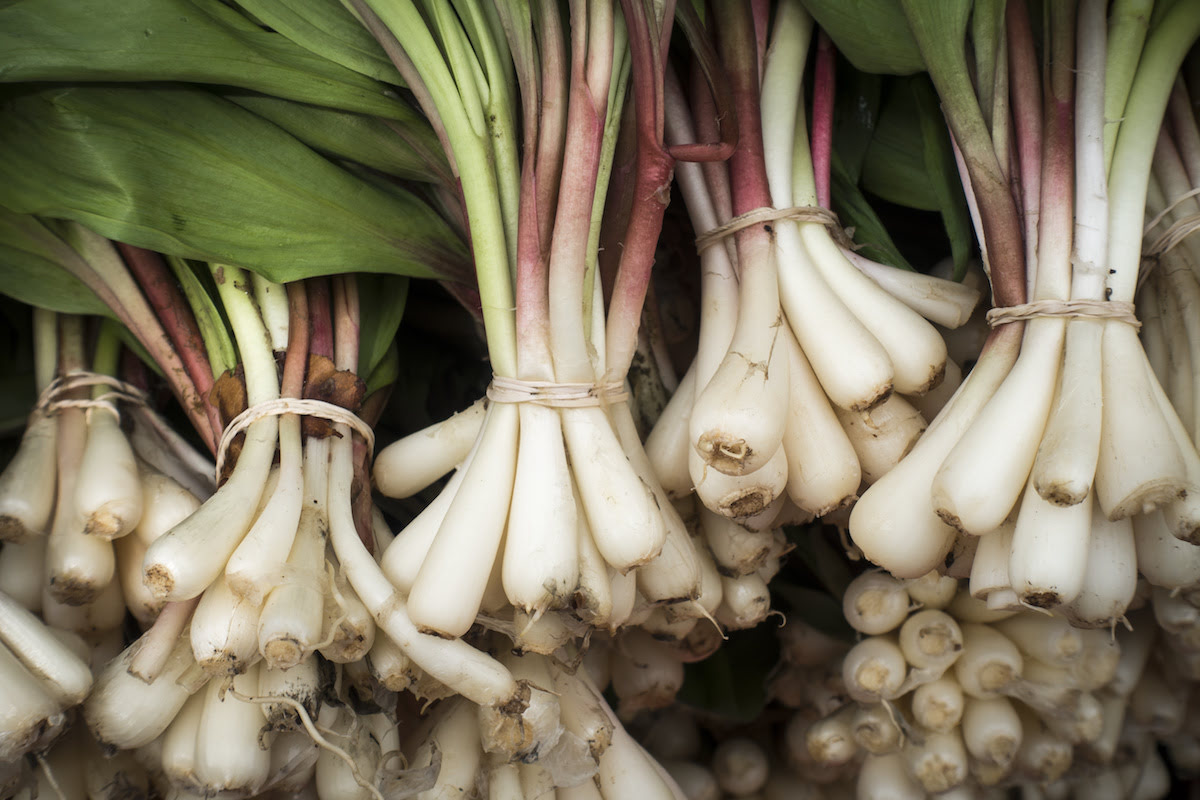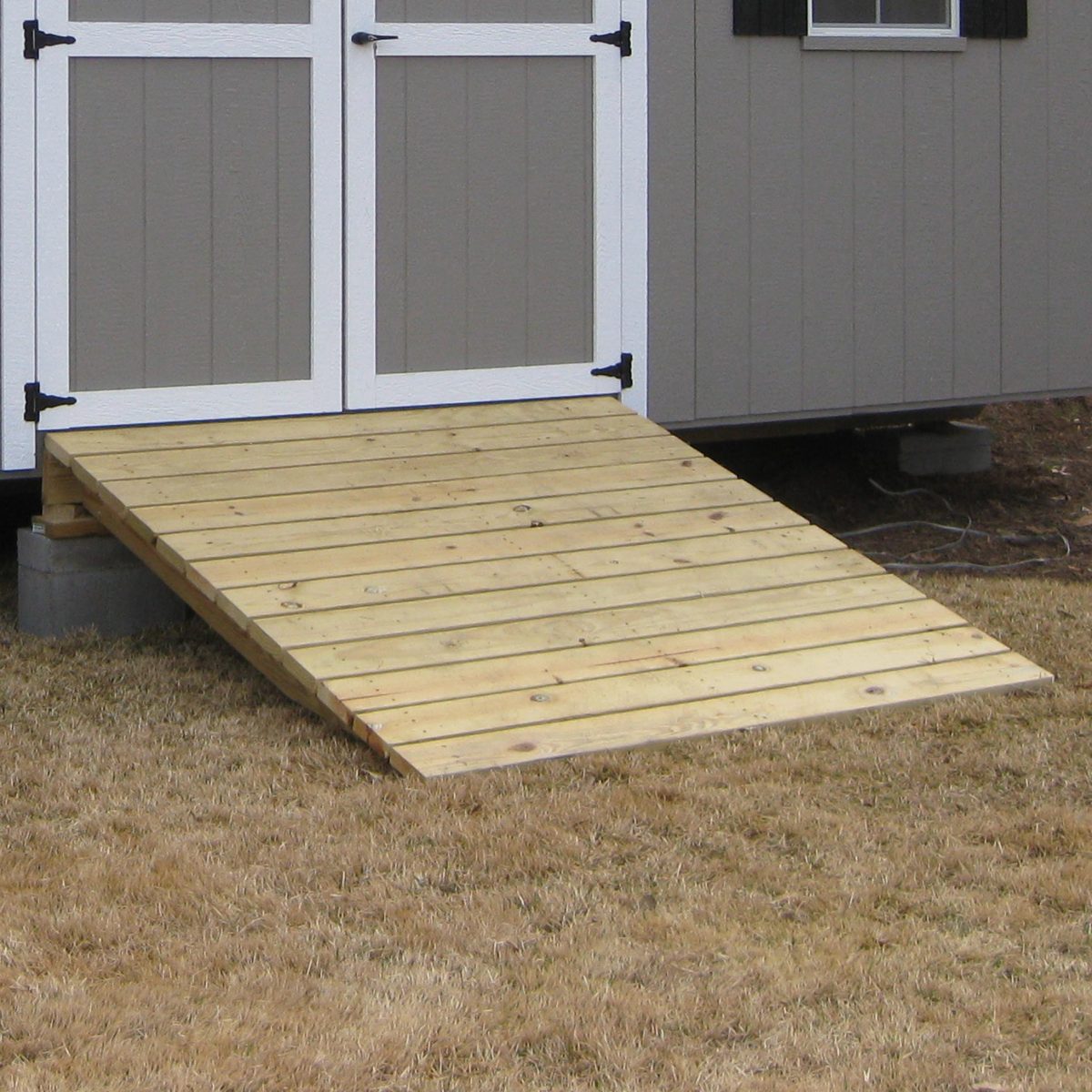

Articles
How To Store Ramps
Modified: December 7, 2023
Learn the best practices for storing ramps and keeping them fresh for your next meal. Read our articles for expert tips and advice on proper ramp storage.
(Many of the links in this article redirect to a specific reviewed product. Your purchase of these products through affiliate links helps to generate commission for Storables.com, at no extra cost. Learn more)
Introduction
Welcome to our guide on how to store ramps, the vibrant and delicious wild leeks that are highly sought after during their short growing season. Ramps have a unique combination of flavors, with hints of onion, garlic, and a slight sweetness. They are a versatile ingredient that can be used in various recipes, from soups and salads to pesto and pickles.
However, ramps have a relatively short lifespan, as they are harvested in the early spring and can spoil quickly if not properly stored. That’s why it is essential to know the best methods for storing ramps to extend their shelf life and enjoy them beyond their brief season.
In this article, we will explore different storage methods for ramps, including refrigeration, freezing, and pickling. We will discuss the steps involved, the optimal conditions, and the advantages and drawbacks of each method. By the end, you’ll be equipped with the knowledge to ensure your ramps stay fresh and flavorful for as long as possible.
Key Takeaways:
- Preserve the unique flavor of ramps by refrigerating for short-term freshness or freezing for long-term use. Experiment with oil, vinegar, salt, or pickling brine to infuse ramps with rich, tangy, or intense flavors.
- Extend the enjoyment of ramps beyond their short season by choosing the right storage method. Whether it’s the convenience of refrigeration, the versatility of freezing, or the creativity of pickling, ramps can add a burst of deliciousness to your culinary creations.
Read more: How To Build A Ramp For A Deck
Understanding Ramps
Before we dive into the various storage methods for ramps, let’s take a moment to understand this unique seasonal ingredient. Ramps, also known as wild leeks or wild garlic, are a type of wild onion that grows in forests and woodlands. They have broad green leaves and a bulbous white or purple base, both of which are edible.
Ramps have been highly prized for centuries for their distinct flavor and versatility in culinary applications. They offer a combination of onion and garlic flavors, with a slightly milder taste than their cultivated counterparts. This makes ramps an excellent addition to a wide range of recipes, adding depth and complexity to dishes.
One reason why ramps are so sought after is their short growing season. They typically appear in early spring, around April or May, and have a relatively brief period of availability, typically lasting only a few weeks. This limited window of availability adds to their allure and prompts many enthusiasts to stock up on ramps during the season.
Due to their popularity, ramps have become a delicacy and are often foraged by chefs, food enthusiasts, and even home cooks who appreciate their unique flavor and culinary potential. However, because ramps are a wild ingredient, proper storage is crucial to preserve their freshness and prevent them from spoiling.
Now that we have a better understanding of ramps and their significance as a seasonal ingredient, let’s explore the different methods for storing ramps to ensure that you can enjoy their delightful flavor for an extended period.
Choosing the Right Storage Method
When it comes to storing ramps, there are several methods to choose from. The ideal storage method will depend on your preferences and how you plan to use the ramps in the future. Here are some factors to consider when selecting the right storage method:
- Freshness: If you want to maintain the fresh flavor and crisp texture of ramps, you should opt for short-term storage methods, such as refrigeration or freezing.
- Convenience: If you prefer easy access to ramps and the ability to use them in various dishes without the need for thawing, storing ramps in oil, vinegar, salt, or a pickling brine can be a convenient option.
- Longevity: If you want to preserve ramps for an extended period, freezing or pickling is your best bet, as these methods can help ramps stay fresh for several months.
- Flavor Enhancement: Pickling ramps can infuse them with additional flavors, such as herbs, spices, or tangy vinegar, enhancing their taste and versatility in recipes.
Consider your preferences and how you intend to use the ramps to decide which method suits you best. Now, let’s explore the different storage methods for ramps in more detail.
Storing Ramps in the Refrigerator
Refrigeration is a popular and convenient method for storing ramps, especially if you plan to use them within a week or two. Follow these steps to properly store ramps in the refrigerator:
- Start by trimming off the roots from the ramp bulbs. Leave a small portion of the root attached to the base, as this can help preserve the ramp’s freshness.
- Gently wash the ramps under cold water to remove any dirt or debris. Pat them dry with a clean towel or paper towels.
- Place the ramps in a sealable plastic bag or an airtight container. To prevent moisture buildup, you can wrap the ramps in a slightly damp paper towel or place a damp cloth at the bottom of the container.
- Store the ramps in the refrigerator’s vegetable drawer or a section with a temperature range of 32-40°F (0-4°C). This temperature range helps maintain the ramps’ freshness and slows down their deterioration.
- Check the ramps regularly for any signs of spoilage, such as sliminess or a foul odor. Discard any ramps that have gone bad to prevent the spoilage from spreading to the other ramps.
It’s worth mentioning that ramps stored in the refrigerator will gradually lose their freshness and crispness over time. As such, it’s best to use them within a week or two for optimal flavor. If you can’t use all the ramps within this timeframe, consider other storage methods like freezing or pickling to extend their shelf life.
Now that you know how to store ramps in the refrigerator let’s explore another popular method for ramp storage – freezing.
Storing Ramps in the Freezer
Freezing ramps is an excellent option if you want to extend their shelf life and enjoy their delicious flavor beyond their short growing season. Follow these steps to properly store ramps in the freezer:
- Prepare the ramps by trimming off the roots and any wilted or damaged parts. Rinse them under cold water to remove any dirt or debris. Pat them dry with a clean towel or paper towels.
- Chop the ramps into smaller pieces, depending on how you plan to use them in recipes. You can chop them into slices or dice them, whichever suits your cooking needs.
- Blanch the chopped ramps by placing them in a pot of boiling water for about 2 minutes. This helps preserve their color, texture, and flavor. After blanching, transfer the ramps immediately to a bowl of ice water to stop the cooking process.
- Drain the ramps well and pat them dry to remove excess moisture.
- Place the blanched and dried ramps in a freezer-safe bag or airtight container. Squeeze out as much air as possible to prevent freezer burn. Alternatively, you can vacuum seal the ramps for an extra layer of protection.
- Label the bag or container with the date of freezing to keep track of its freshness.
- Store the ramps in the freezer at 0°F (-18°C) or below. The frozen ramps can be kept for up to 6 months, but for the best flavor and quality, try to use them within 3-4 months.
When you’re ready to use the frozen ramps, there’s no need to thaw them beforehand. You can directly add them to your recipes, whether it’s soups, stir-fries, or sautés. The freezing process may slightly change the texture of the ramps, but their flavor and aroma will still be preserved, making them a versatile ingredient for a variety of dishes.
Now that you know how to store ramps in the freezer, let’s explore other creative methods for preserving ramps – storing them in oil, vinegar, salt, or pickling brine.
Store ramps in the refrigerator in a perforated plastic bag to maintain freshness. Alternatively, you can wrap them in a damp paper towel and place them in a resealable plastic bag. Keep them in the vegetable crisper for up to a week.
Read more: How To Build A Porch Ramp
Storing Ramps in Oil
Storing ramps in oil is a great way to preserve their fresh flavor while infusing them with the richness of the oil. Follow these steps to properly store ramps in oil:
- Clean the ramps thoroughly by trimming off the roots and any wilted or damaged parts. Rinse them under cold water to remove any dirt or debris. Pat them dry with a clean towel or paper towels.
- Heat a small amount of oil, such as olive oil or vegetable oil, in a skillet over medium heat. Sauté the ramps for a few minutes until they become tender. This step helps remove excess moisture from the ramps and enhances their flavor.
- Allow the sautéed ramps to cool completely before transferring them to a clean, dry jar or container.
- Fill the jar or container with enough oil to fully cover the ramps. Use a high-quality oil with a neutral flavor that can withstand the preservation process.
- Seal the jar or container tightly and store it in the refrigerator.
- These oil-preserved ramps can last for several weeks in the refrigerator. However, keep an eye out for any signs of spoilage, such as mold or off flavors. If you notice any, discard the entire batch to prevent foodborne illnesses.
Oil-preserved ramps can be used in various culinary applications. They add a burst of flavor to pasta dishes, salads, sandwiches, and even as a topping for pizza. The infused oil can also be used as a flavorful base for dressings, marinades, and sautéing other ingredients.
Now that you know how to store ramps in oil, let’s explore another popular method – storing ramps in vinegar.
Storing Ramps in Vinegar
Storing ramps in vinegar is a wonderful way to preserve their unique flavor while infusing them with the tangy acidity of the vinegar. Follow these steps to properly store ramps in vinegar:
- Begin by cleaning the ramps thoroughly, removing the roots and any wilted or damaged parts. Rinse them under cold water to remove any dirt or debris. Pat them dry with a clean towel or paper towels.
- Prepare a solution of vinegar and water by mixing equal parts in a pot. Bring the mixture to a boil.
- Add the cleaned ramps to the boiling vinegar-water solution and blanch them for about 2 minutes. This blanching process helps preserve their color, texture, and flavor.
- Using a slotted spoon or tongs, transfer the blanched ramps to a clean, dry jar or container.
- Fill the jar or container with enough vinegar to fully cover the ramps. You can use white vinegar, apple cider vinegar, or your preferred type of vinegar.
- Seal the jar or container tightly and store it in a cool, dark place, such as a pantry or cellar.
- Allow the ramps to sit in the vinegar for at least a week to fully develop their flavors. They can be stored in the vinegar for several months.
Vinegar-preserved ramps have a wonderfully tangy and pickled taste. They can be used in a variety of dishes, such as salads, sandwiches, charcuterie boards, or as a garnish for grilled meats and seafood. The infused vinegar can also be used in dressings, marinades or as a flavoring agent in recipes.
Remember to store the vinegar-preserved ramps in a cool, dark place, and once opened, keep them refrigerated to maintain their freshness and prevent spoilage. It’s important to check the ramps for any signs of mold or off flavors before using them.
Now that you know how to store ramps in vinegar, let’s explore another creative method – storing ramps in salt.
Storing Ramps in Salt
Storing ramps in salt is a unique preservation method that not only helps extend their shelf life but also enhances their flavor. The salt acts as a natural preservative and draws out moisture from the ramps. Follow these steps to properly store ramps in salt:
- Clean the ramps thoroughly by trimming off the roots and any wilted or damaged parts. Rinse them under cold water to remove any dirt or debris. Pat them dry with a clean towel or paper towels.
- Prepare a bed of salt in a container or jar. You can use coarse sea salt, kosher salt, or any non-iodized salt of your choice.
- Place a layer of ramps on top of the salt bed, making sure they are spaced apart and not touching each other.
- Cover the ramps completely with another layer of salt, ensuring they are fully submerged.
- Continue layering ramps and salt until all the ramps are packed in the container.
- Seal the container tightly and store it in a cool, dry place, such as a pantry or cellar.
- The salt-preserved ramps will slowly dehydrate over time, creating a concentrated and flavorful ingredient.
When you need to use the salt-preserved ramps, remove them from the container and rinse off the excess salt under cold water. Be mindful that these preserved ramps will be salty, so adjust the amount of salt in your recipe accordingly. They can be used in sauces, stews, risottos, or any dish where you want to add an intense flavor of ramps.
Remember to store the salt-preserved ramps in a sealed container to maintain their quality and prevent moisture absorption. Check the ramps for any signs of spoilage before using them.
Now that you know how to store ramps in salt, let’s explore another creative method – storing ramps in pickling brine.
Storing Ramps in Pickling Brine
Storing ramps in a pickling brine is a popular method that preserves their flavor while infusing them with tangy and tangy flavors. The pickling process adds a unique twist to ramps, making them a versatile ingredient in various dishes. Follow these steps to properly store ramps in pickling brine:
- Start by cleaning the ramps thoroughly, removing the roots and any wilted or damaged parts. Rinse them under cold water to remove any dirt or debris. Pat them dry with a clean towel or paper towels.
- Prepare the pickling brine by combining vinegar, water, sugar, and salt in a pot. Bring the mixture to a simmer, stirring until the sugar and salt dissolve.
- Add any desired flavorings to the brine, such as spices, herbs, or garlic cloves, to enhance the flavor profile of the pickled ramps.
- Place the cleaned ramps in clean, sterilized jars or containers.
- Pour the hot pickling brine over the ramps, making sure they are fully submerged.
- Seal the jars or containers tightly and let them cool to room temperature.
- Store the pickled ramps in the refrigerator for at least a week to allow the flavors to develop. They can be kept in the fridge for several months.
Pickled ramps can be used in a variety of dishes, such as sandwiches, salads, charcuterie boards, tacos, or served as a flavorful garnish. The tangy and slightly sweet taste of the pickling brine pairs well with the ramps’ natural flavors, creating a delightful and savory addition to your meals.
Remember to store the pickled ramps in the refrigerator and consume them within a few months for the best flavor and quality. It’s important to check the ramps for any signs of spoilage, such as mold or off flavors, before using them.
Now that you know how to store ramps in pickling brine, you have a range of options to choose from to preserve ramps and enjoy their flavors throughout the year.
Read more: How To Make A Driveway Ramp For Lowered Cars
Conclusion
Storing ramps properly is key to extending their shelf life and enjoying their unique flavor beyond their short growing season. By choosing the right storage method, you can preserve ramps and incorporate them into a variety of recipes throughout the year.
Refrigeration is a convenient option for short-term storage, allowing ramps to stay fresh for up to a week or two. Freezing ramps is ideal for long-term preservation, maintaining their flavor and versatility for several months. Storing ramps in oil infuses them with richness, while pickling ramps in vinegar or brine adds tanginess and complexity. Finally, storing ramps in salt concentrates their flavor and provides a unique twist.
Whether you prefer the fresh crunch of ramps stored in the refrigerator or the intense flavor of pickled ramps, each method offers a unique culinary experience. Consider your desired level of freshness, convenience, longevity, and flavor enhancement when selecting the storage method that suits your preferences and cooking needs.
Remember to properly clean the ramps before storing them and check for any signs of spoilage regularly. By following the storage methods outlined in this guide, you can enjoy the delightful taste of ramps long after their short season has ended.
So, go ahead and experiment with different storage methods to savor the flavors of ramps throughout the year. Whether you’re sautéing them in oil, pickling them in vinegar, or enjoying the convenience of freezing, ramps are sure to add a burst of deliciousness to your culinary creations.
Frequently Asked Questions about How To Store Ramps
Was this page helpful?
At Storables.com, we guarantee accurate and reliable information. Our content, validated by Expert Board Contributors, is crafted following stringent Editorial Policies. We're committed to providing you with well-researched, expert-backed insights for all your informational needs.














0 thoughts on “How To Store Ramps”